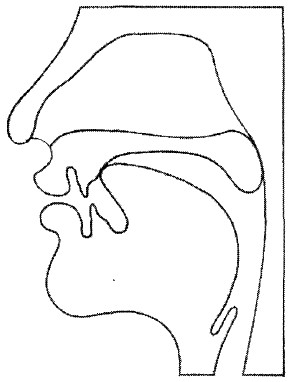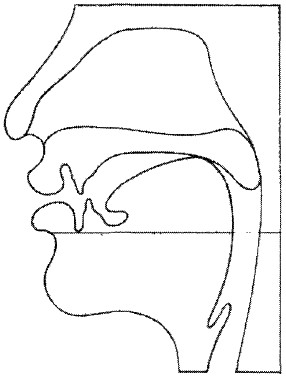Plosives
Plosives occur when a complete closure is made somewhere in the vocal tract. Air pressure increases behind the closure and is then released in an ‘explosion’. Plosive sounds are also sometimes referred to as ‘stops’.
Unvoiced sounds like / p / are shown on a grey background.
Voiced sounds like / b / are shown on a white background.
Characteristics
Bilabial sounds: total closure is made using both lips. The soft palate is raised. / p / is unvoiced and fortis. / b / is voiced and lenis. / b / is devoiced at the end of a word.
Examples:
/ p / pin, cap, happen,
/ b / bin, cab, cabbage
Characteristics
Alveolar sounds. Closure is made by the tongue blade against the alveolar ridge. The soft palate is
raised. / t / is unvoiced and fortis. / d / is voiced and lenis. / d / is devoiced at the end of a word.
Examples:
/ t / to, hat, hotter
/ d / do, had, harder
Characteristics
Velar sounds. Closure is made by the back of the tongue against the soft palate. / k / is unvoiced and fortis. / g / is voiced and lenis. / g / is devoiced at the end of a word.
Examples:
/ k / cot, pick, packet, queue
/ g / got, pig, forget,


